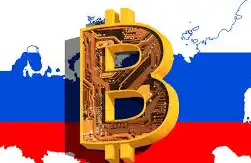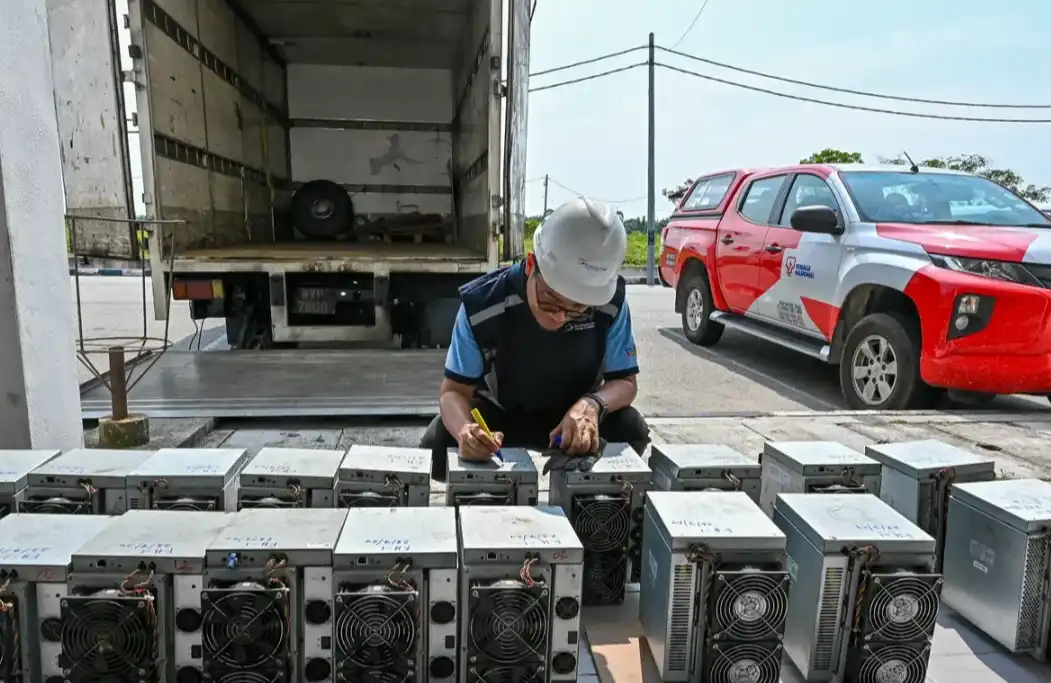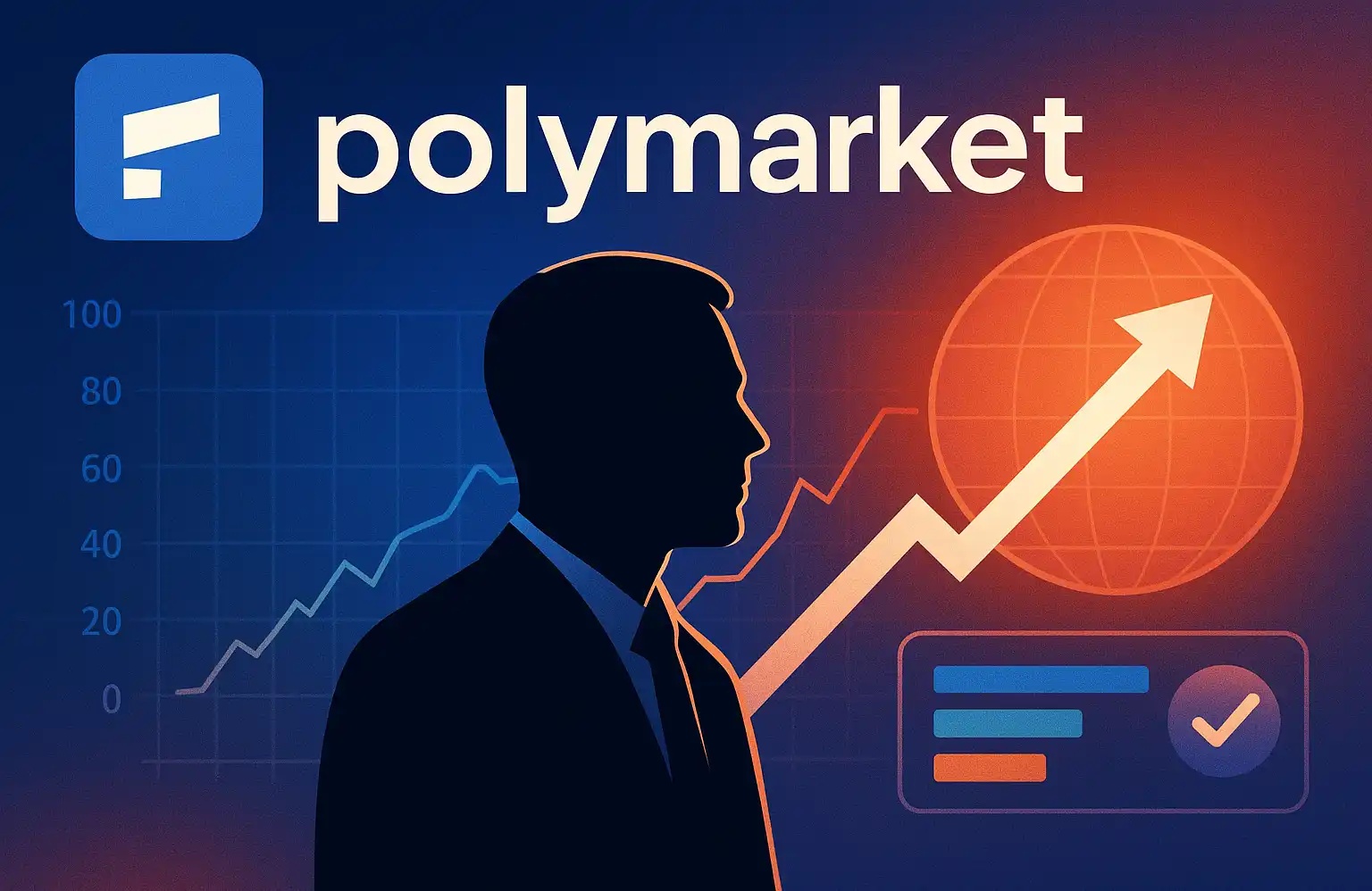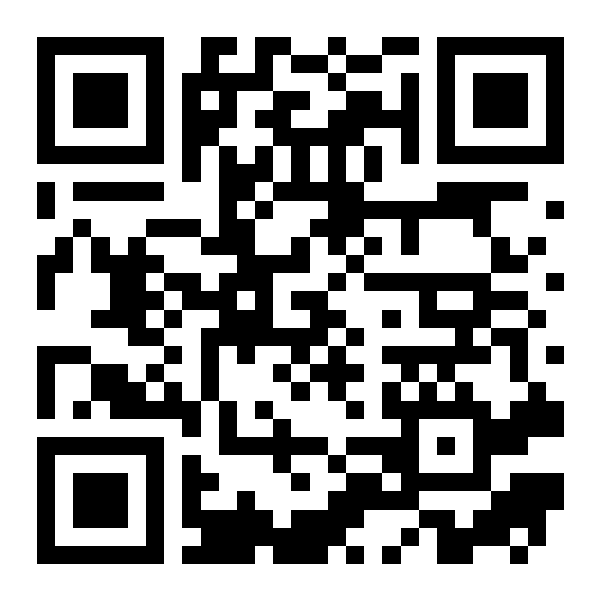Stablecoin, a Cashless Payment Reform for 5 Billion People
「I never thought a stablecoin could be spent directly, just like using Alipay.」
Ella said in surprise, with a sense of astonishment as if "suddenly catching up with the times."
Her husband is a somewhat well-known KOL in the Web3 community. Usually, to convert cryptocurrency to fiat currency, he has opened no fewer than five offshore bank accounts. They even specifically traveled to Hong Kong to exchange USDT for Hong Kong dollars through a narrow window-like opening.
On the first morning of their trip to Vietnam, they walked into a chain coffee shop in Ho Chi Minh City, ordered lattes and baguettes, and the cashier pointed to a QR code on the checkout screen, saying they could use "USDC." Ella took her husband's phone and tried to scan the code using a wallet. The payment interface popped up, and the transaction was completed in less than five seconds.
In that moment, for the first time, she didn't just hear people talk about how great stablecoins were; she actually used her own finger to experience that it had truly become a part of everyday life.
Prior to 2025, no one had imagined that the next major mainstream breakthrough in the Crypto industry would be due to stablecoins.
Reflecting on the previous two breakthroughs, Bitcoin was about decentralized value consensus, and NFTs were about a new generation of digital cultural symbols and identities. But they seemed more like symbols belonging to specific circles, crossing hot searches and friend circles only to return to the wallets of a few.
But stablecoins are different this time.
For us, stablecoins may still be a concept, policy news, or stock price charts; but for people on the other side of the world, stablecoins have long been an indispensable part of their lives.
Stablecoins speak of life, of reality. It's about a migrant worker being able to smoothly remit his salary back to his hometown, a digital nomad settling his bill with USDT at a pub, and a young person without a bank account being able to connect with and participate in the world.
Latin America | Young People Escaping the Peso
Afternoon in Buenos Aires is always sultry. Inside a corner store, Federico, holding his phone, leaned against the counter and converted his just-received salary from pesos to USDT. He carried out a few operations on the Lemon Cash interface, and a few seconds later, the screen displayed: "Balance: 873 USDT".
Twenty-six-year-old Federico is a UI designer at a local game company. This is his entire month's salary. He didn't go to the bank or an ATM; instead, just as usual, he promptly converted the pesos in hand into dollars using stablecoins.
Federico said that when he was a child, his family used glass jars to store US dollars, which was his earliest impression of "saving money." Later, the jars were replaced by a shoebox under the bed, a compartment above the kitchen ceiling, and his father even hid a few dollar bills behind the range hood. At that time, it was relatively easy to exchange dollars. Now, to get US dollar cash, not only do you have to wait in long lines, but you also have to risk being robbed.
"None of my friends around me would keep pesos anymore; who knows if they will still be worth anything tomorrow." He shrugged, looking like he had long since become accustomed to it.
In 2023, Argentina's annual inflation rate soared to 211%, and the peso depreciated by 74% against the dollar. Over the years, inflation has turned the cost of living here into a series of continuously refreshing, ceilingless numbers.
Sun is the founder of the-mu, and they have been establishing local entrepreneur communities worldwide. In 2024, they came to Argentina and set up a Web3 entrepreneur community here, organizing multiple offline events.

Offline event organized by the-mu in Argentina, Image Source: Sun
Sun shared an interesting story. At the end of 2023, he and his team came to Argentina for investigation. The price of a lunch in Buenos Aires was about 50 Chinese Yuan. By March 2024 when they held an event, the price of a lunch had risen to 100 Chinese Yuan. And by the end of 2024, the price for the same meal further increased to 130 Chinese Yuan. Here, the currency had long lost its function as a measure of value.
Meanwhile, the official exchange rate remained posted on the wall as a self-deception, while the black market rate not only differed significantly from the official rate but also was eye-opening.
"Do you know we have seven or eight exchange rates here?" Federico laughed somewhat helplessly. "Even when Coldplay came for a concert, they managed to create a temporary exchange rate."
He was referring to the year 2022 when the Argentine government indeed introduced a special exchange rate policy for international concerts. The rate was much higher than the normal rate to cope with the significant devaluation of the peso at that time and ensure that the event organizers received enough US dollars. This is a country where the absurd has become routine.
In such an untrustworthy system, stablecoins like USDT and USDC began to emerge like ice floes breaking the surface of the water. Initially, people exchanged money discreetly; black market dollars were unsafe, and even storing them under the bed risked theft or destruction. Later, people discovered that the wallet address on their phones might be a safer way to save.
In 2024, Latin America became one of the fastest-growing regions in the global crypto ecosystem, receiving a total of over $415 billion in cryptocurrency, with its global share rising from 7.3% to 9.1%. The annual growth rate reached 42%. Among the users opening crypto apps in Latin America, 40% are from Argentina. In that year, cryptocurrency transactions in Argentina reached $911 billion, with nearly 10% of Argentinians using stablecoins monthly, and at peak times, the adoption rate approached 25%.
Local stablecoin platforms like Lemon Cash and Belo sprouted like mushrooms, absorbing the entire country's disappointment with the fiat currency.
"Our fiat currency is just an extremely rubbish memecoin." Sun said this is the consensus among all local Web3 entrepreneurs in Argentina.
From a young age, Argentinians have habitually resisted the government and the financial system. For many young people, the first significant decision they make as adults is not which university to attend or which career to choose, but how to prevent their money from further shrinking. They no longer wait for a better peso policy but choose not to wait any longer.
These young people have gradually established a new order. They still keep some pesos to pay for daily small expenses, while for more valuable items like phones, computers, and rent, they settle directly in dollars and stablecoins. Life experiences are forcing people to continuously seek the most viable solution.
Lemon Cash is now the largest local centralized exchange platform in Argentina, with a peak of 5 million monthly active users and a low point that still maintains a level of one to two million. In 2024, the platform processed a total transaction volume of over $59 billion for the whole year, with a single quarter in the fourth quarter exceeding $20 billion. The total amount of crypto deposits on the platform almost doubled, with 78% of the deposits in stablecoins. Behind this pool of funds are millions of people who have abandoned banks and chose stablecoins as their "digital piggy bank."

Users using Lemon Cash's physical U card. Image Source: Lemon Cash
You can see an elderly person diligently learning how to exchange on the Lemon Cash interface; a taxi driver asking colleagues in a group chat how to withdraw USDT to cash; and a high school teacher telling her students, "Storing USDT is a bit safer than keeping paper money in a drawer."
They use stablecoins for savings, transfers, and inflation hedging; Lemon Cash has also embedded stablecoin financial management into the platform, and some people are starting to explore the platform's financial management features to earn some annualized returns. Federico says he doesn't have the courage for that, as too many "high-yield scams" in the past have made him wary of any investment.
Sun mentioned that a considerable portion of the developers who once drove the rise of DeFi protocols actually came from Argentina, such as the security team at OpenZeppelin, researchers at Lambda Class, and the Head of Smart Contracts at MakerDAO.
Today, their compatriots are using stablecoins to bring that financial idealism into real life.
"We don't distrust the country; we just believed once, and the cost was too high." Federico repeated this statement several times during the interview.
And that distrust completely collapsed after the memecoin incident with Milagro. The new president of Argentina, originally seen as a symbol of hope, was duped into a crypto farce. Although he quickly fired those involved, the societal sentiment could not be undone. The blockchain goodwill in the hearts of proud Pampas grassland dwellers once again plummeted after the Web3 entrepreneurs were forced back "underground," many began avoiding publicly acknowledging their Argentine identity to protect themselves and their families.
Nevertheless, stablecoins slowly permeated. In Argentina, starting from youth-oriented consumption scenes, merchants have gradually begun accepting stablecoin payments. While it is not yet the mainstream payment method here, once people learn how to use it, it will become the most natural choice.
The peso is still the "legal tender" by law, but it has gradually been sidelined in people's lives. It is no longer a measure of value but more like an obstacle to circumvent.
In a country plagued by frequent government defaults and a sustained economic downturn, people are using USDT to sustain savings and stablecoins to build a daily life that cannot be dragged down. Their financial lives no longer rely on the state, or even on banks. Their trust has shifted from the national machinery to individual on-chain addresses.
People are no longer waiting for the system to bring redemption; instead, they have found ways to survive on their own. In an era of a failed national currency, Crypto has become another form of trust.
Southeast Asia | Young People Accessing the World Through Cryptocurrency
At six in the morning, Ho Chi Minh City was still shrouded in a thin mist. The cafes on the street had just opened, and the staff skillfully placed a QR code sign that read "USDC Accepted" on the counter, then casually wiped away the moisture on the touch screen with their sleeves.
Alex ordered a cup of Americano, stood at the counter, opened his Bitget wallet, scanned the code, confirmed, and with a "beep," it was done in one go. He didn't bring a physical wallet, nor did he inquire about the exchange rate. Using USDC for payment was as natural to him as brushing his teeth every day.
He is Ukrainian and has spent the past year traveling around Southeast Asia with his wife. From Chiang Mai to Bali, then to Kuala Lumpur and Ho Chi Minh City, they are always on the move. They belong to a borderless group, digital nomads. They don't need a fixed address, but they must have a financial system that can cross borders without restrictions. For Alex, that's USDC.
"I don't go to the bank." His tone was calm, as if stating an obvious fact. From getting paid, daily expenses, to savings, everything is settled on-chain, unaffected by the local banking system, and without worrying about frozen accounts. "My wallet is my real bank."
This is not an exception.
Southeast Asia has a rare financial structure mismatch: bank cards have not penetrated the population deeply, but QR code payments are ubiquitous.
In Indonesia, nearly half of adults do not have a savings account; in the Philippines, 44% of salaried workers still bring their wages home in paper bags; and in Vietnam, the credit card ownership rate is only 4%, and card payments are still a rarity for most people. However, at the same time, QR codes on mobile phones have long been the payment method of choice, from street food stalls to massage parlors and bubble tea shops, almost everyone is accustomed to scanning codes.
Indonesia's national QRIS payment network has covered over 32 million merchants within a few years, with a user base of over 50 million people, and a transaction's annual growth rate reaching 226%. The Lowy Institute describes this wave as "from night market skewers to the tail lights of tuk-tuks, payments are completed in silence."

Using stablecoin for offline payments in Vietnam, Source: Bitget Wallet
This reality of "difficulty in card adoption but a thriving QR code culture" provides a natural entry point for stablecoins.
The Bitget Wallet was one of the earliest to attempt to bridge this path. They partnered with a local licensed fiat OTC trader to establish a complete backend settlement mechanism: users scan the code to make payments on the frontend, while the backend instantly completes the stablecoin-to-local fiat exchange and settlement. Karry, CEO of Bitget Wallet, said, "Within less than half a month of our launch, we were already processing thousands of transactions every day."
Many of these stablecoin users don't even participate in "coin speculation."
Kari in Bangkok is a video editor whose clients mostly come from Europe and the United States. She used to receive payments through Wise or SWIFT until one day her account was frozen due to risk control measures for three days. Since then, she has switched to using USDC, saying, "I don't understand blockchain, but I know stablecoins are convenient. I don't need to argue with platforms."
Q is another digital nomad who has been living in Chiang Mai for years and used the U Card launched by Infini for everything: dining, transportation, hotel booking, and even grocery shopping. It wasn't until Infini discontinued its service that she realized she had already relied on this "on-chain to off-line" payment system for her life.
"I'm still looking for an alternative card," she said.
She visited several local currency exchange points in Chiang Mai, saw signs indicating "USDT/USDC Exchange" at the counters, and noticed WeChat and Alipay appearing in the payment methods column. However, the exchange rates were not favorable, with USDT exchanged for Thai Baht at only 32.6. Nevertheless, she was willing to exchange, saying, "The process is much simpler than dealing with a bank."

Stablecoin exchange point in Chiang Mai; Image Source: Q
She chuckled and added, "My friend and I split the bill and used USDC for the transfer, so this also counts as a form of stablecoin payment, right?"
These detailed scenes seem to piece together a shadow financial system. It does not rely on banks, does not require a credit history, and sidesteps the narrative and definition of regulation. Those who use it are freelancers, workers, tourists, and vendors who, with a series of chain addresses, have built their own financial lives.
This kind of "invisible infrastructure" may be the true face of Mass Adoption.
Regulators have also noticed the direction of the tide. In 2023, the Monetary Authority of Singapore introduced a stablecoin regulatory framework, explicitly requiring a 1:1 reserve, a redemption mechanism, and transparent audits. At a certain magical moment, private demand and official policy tacitly began to converge.
However, looking across Southeast Asia, the adoption of stablecoins has never been a matter of waiting; it has long since quietly infiltrated the streets: a salary remittance, an AA split bill for a meal, a cash exchange transaction. For young digital nomads, it is the foundational asset system for their free migration; for local freelancers and blue-collar workers, it is a better solution for remittance, savings, and payments.
These people may not necessarily know what blockchain is, nor do they necessarily care about regulatory trends. But stablecoins have long seeped into their daily lives, slowly permeating through the crevices of life like water.
Africa | Young People Abandoned by the Banking System
"We paid for the Great Migration tour using stablecoins," Joy on the other end of the screen recalls her trip that ended just a few days ago.
She is a Chinese entrepreneur doing business in Africa. She said that doing business here, receiving USD is too slow, and using RMB also requires a somewhat cumbersome exchange process.
Joy spent five minutes teaching the travel agency how to receive stablecoins in a wallet. When she sent out USDT, it arrived in seconds. Then, they immediately started providing various services during the trip.
"Many people already knew about this," she said with a smile, "they just didn't know how to start."
In Africa, such "first times" are happening every day. According to Chainalysis, just in the past year, 43% of on-chain transactions in sub-Saharan Africa came from stablecoins, offering some choices that were originally excluded from the system.
This vast and young continent, according to United Nations data for 2025, has a median age of 19.3 years among its population, with 60% of them under 25 years old. However, on the map of the financial system, it has always been depicted as sparse and blurry. With 54 countries, 33 classified by the United Nations as "least developed countries," for many here, a "bank account" is not the starting point of finance but rather an inaccessible gate.
You need identification, a fixed address, a stable income, a credit history, all of which are far out of reach for most people.
So they took a different direction and set up their own financial system along the crevices. Stablecoins are not the kind of high-concept cryptocurrency; they are more like a blunt but reliable tool. They have provided the young people of this continent with the ability to receive, save, and spend money. Nigeria is an epitome; in the past year, the cryptocurrency transaction volume reached a staggering $59 billion, with 85% of it being small remittances of less than a million, transaction by transaction, all fragments of daily life.

Nigeria Billboard, Image Source: Martin
Joy is the founder of Gimlet, a stablecoin payment platform. They have built an on-chain settlement system for local merchants, where B2B customers pay with USDT. After the merchant confirms the order, they receive the payment within seconds, which is more than just a slight improvement in speed from before.
Her tone as she narrates is calm, as if discussing a very normal metric improvement. Yet, you can sense the relief behind it, the transformation of what used to be a cumbersome financial flow suddenly becoming manageable.
"When you travel in Africa now, having coffee, sometimes you will see small shops accepting cryptocurrency payments," she said. "Of course, it is not yet at a very common level, but it is much more common than a year ago."
Currently, most of the merchants accepting stablecoin payments here are some large and medium-sized businesses, or hotels, travel agencies, wholesalers dealing with cross-border customers frequently. Not everyone is using it, but you can see the system creeping towards the edge of daily life. It is no longer "novel," just not yet "ubiquitous."
Joy recalled that when their company was recruiting locally, many highly educated young people would voluntarily ask, "Can we be directly paid in USDT?"
On one hand, it is to combat inflation, and on the other hand, it is also for tax evasion considerations. In the growth path of these individuals, banks and modern finance have never really been on their side. Actually, it's not surprising; 70% of African countries face forex shortages, and sometimes even companies have to wait several weeks to exchange some dollars to buy machinery. Being able to receive stablecoins directly has become a more secure path. According to Interlace's Founder Michael, banks in some developing countries usually grant a certain amount of dollars to companies each month. Many companies choose to exchange the local currency for USDT via OTC markets when the quota is insufficient.
Tether CEO Paolo Ardoino said at the 2025 Bitcoin Conference, "They have already been abandoned by the traditional financial system." This statement is not an exaggeration at all.
Western Union remittances often take 10%–15%, and the slowest may take several days to arrive; bank transfers may seem professional but often require additional validation, local intermediaries, and correspondent clearing institutions, making the arrival time uncontrollable and highly susceptible to disruptions.
“The banking system over there is quite exclusive.” When Martin mentioned his colleague's experience, there was a sense of helplessness in his tone. “The account was frozen without warning, and to unfreeze it, a ‘protection fee’ must be paid. This situation has been going on for several years now.”
Martin is the representative of Noones in China. This cryptocurrency exchange platform, which supports gift cards, bank transfers, and various payment methods, has rapidly accumulated a large number of users in Nigeria and Ghana in recent years.

Noones at an exhibition in Africa, Image Source: Martin
In contrast, on-chain stablecoin transfers are fast, inexpensive, transparent, and verifiable. Data analysis shows that sending $200 from sub-Saharan Africa via stablecoin costs about 60% less. That crypto wallet is the first truly personal account for many.
However, only a small percentage of young people engage in cryptocurrency trading. Most don't rush to use stablecoins to participate in on-chain adventures. Joy mentioned that after most people receive USDT, they just keep it there. They don't engage in DeFi, financial management, or tinkering.
“They only recognize the Tron network and mainly use USDT.” When Martin talked about the platform users' habits, he chuckled. “They have never even heard of Solana or TON. Among mainstream coins, they only know about Bitcoin, and even Ethereum doesn't have much influence there.”
They've experienced how inflation turned banknotes into waste paper in three months, making stocks, bonds, and gold out of reach. For them, a stablecoin that holds its value without depreciation is already a top student.
“They only make small transfers, with most being a few hundred USDT; anything over a thousand is already a large amount, almost equivalent to a family's monthly living expenses.” Martin said.

Noones conducting offline advocacy in Nairobi, Kenya, Image Source: Noones Africa
The stablecoin trading volume across the entire African continent has exceeded $30 billion, with a adoption rate of over 9.3% in sub-Saharan Africa. This is a future in progress, not the imagination of the crypto community.
At the cross-border trade level, stablecoins have become an increasingly common tool for Chinese companies doing business in Africa. With high payment efficiency, they bypass the foreign exchange dilemma and eliminate various uncertainties associated with intermediaries. The 2025 China-Africa Economic and Trade Expo saw the signing of 176 cooperation projects with a total value exceeding $11.3 billion. This systemic capital flow is fundamentally also building scenarios for stablecoin utility. Joy believes that once Hong Kong Dollar stablecoins are implemented, they will quickly gain traction in Africa.
Cryptocurrency is rewriting the map of African finance. Nigeria has ranked second in the global adoption index, with Ethiopia, Kenya, and South Africa also making it to the top 30. The proliferation of stablecoins in Africa has begun to show signs of emergence. Joy stated, "By the time the 2027 elections arrive and inflation gets another push, stablecoins will become part of more people's daily lives."
In Africa, money has not left them; instead, banks have disappeared from their lives. There are no counters, no documents, no credit history. The people here have never belonged to the traditional financial coordinate system; but this time, the coordinates have shifted to focus on them. Not everyone here understands cryptocurrency, but more and more people are using stablecoins to receive salaries, store living expenses, and bypass banks.
Epilogue | The Changing Face of Money on the Other Side of the World
In our daily lives, money is a line of digits on a banking app, the sound of a beep at the cashier, and the text message received when wages are deposited.
But in a broader world, "money" is often absent—it is the closed Western Union money transfer office, the sole bank branch within dozens of kilometers, the fan waving feebly in a queue, and the skin cracked by the sun.
Stablecoins like USDT, USDC, and others are not just code and consensus; they are more like small boats ferrying people across the currency storm.
One day, you might encounter a receipt like this around the world:
"3.7 USDC Received" flashing on a QR code lightbox on a Vietnamese street corner;
"0.85 USDT Confirmed" reflected in the silhouette of a Kenyan coffee cup;
"Rent Paid 350 USDT" written on the memo board of a shared apartment in Argentina.
These numbers quietly redefine the meaning of "money." They transform the face of currency from a president's portrait to hexadecimal, and shift trust from paper ink to the blockchain.
Stablecoins silently catch those left behind by traditional finance. Countless individuals, with each tiny payment completed with a fingertip, day by day, are piecing together the future financial system.
The face of money, on the other side of the world, is quietly changing.
Welcome to join the official BlockBeats community:
Telegram Subscription Group: https://t.me/theblockbeats
Telegram Discussion Group: https://t.me/BlockBeats_App
Official Twitter Account: https://twitter.com/BlockBeatsAsia












